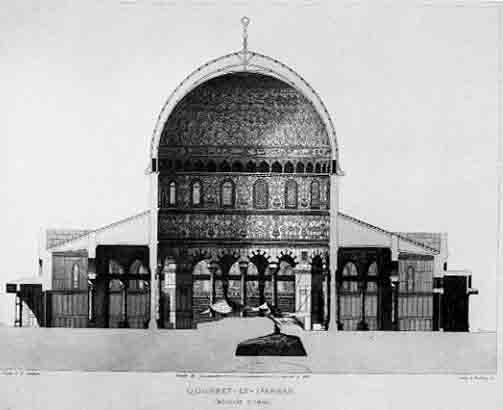Image Details

Melchior de Vogue
In this section drawing of the Dome of the Rock made in the 19th century by Count Melchior de Vogüé, we see the mosque’s interior as if a vertical slice had been cut through its center. The arched colonnade with distinctive dark and light bands converges on the central rock, over which a canopy hangs, suspended by ropes from the column capitals. A shaft leading to a cave penetrates the rock. De Vogüé believed that below this cave was a lower cave and a shaft as seen in outline; however, this was disproved in 1911 by Captain Montague Parker’s clandestine night mission.
The author of this article points out the similarity between the shafts and caves in the drawing by de Vogüé, who made an exhaustive survey of the Temple Mount, and in the structure of Middle Bronze Age I shaft tombs. She suggests that the caves beneath the Dome of the Rock—as well as cisterns elsewhere on the Temple Mount—may have originally been part of a Middle Bronze I cemetery.
